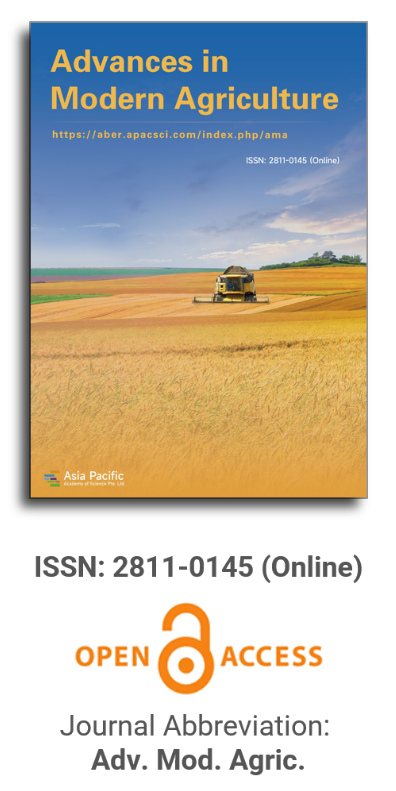


Remote sensing technology has increasingly emerged as a potent tool for precision agriculture, particularly in facilitating the mapping and monitoring of crops on a large scale. An application of this technology is the identification of different types of rice by analyzing the pixels acquired in satellite images. Regrettably, the pixels in the image have been mixed from different recorded items. Therefore, they have the potential to influence the outcome of the identification. An effective approach to addressing this problem is to employ the linear spectral unmixing (LSU) technique. The LSU approach quantifies the ratio of pure objects in every pixel of an image by utilizing the spectral value associated with the endmember of the rice variety. The investigation was carried out in the Karangjati District during the generative stage (70 ± DAP) of the rice planting season. The data indicates that the dominant variety is Inpari 32 HDB. The data validation tests, which involved the use of a confusion matrix and Kappa analysis, resulted in an overall accuracy rate of 85.48% and a Kappa analysis score of 70.6%.
In the article, the results of determining the degree of tolerance to wilt disease in the wilt background of hybrid families obtained using the method of interspecies complex hybridization in the cotton plant are analyzed. In the F2–F4 generations of interspecies complex hybrids, a large-scale process of separation according to the sign of tolerance to wilt disease takes place, and among the hybrids, plants that are not damaged by wilt disease, partially damaged plants, and severely damaged plants are separated. With this in mind, it was confirmed that it is possible to isolate lines and varieties with different levels of wilt damage from complex hybrid combinations of interspecies with different genomes by purposefully conducting selection work by the breeder. A number of wilt disease-tolerant families compared to control cultivars have been isolated and are recommended for use as a starting source in genetic selection studies.
African animal genetic resources are diverse and have been the subject of crossbreeding for decades to improve local livestock and poultry populations. However, the literature on crossbreeding performance has been inconsistent, with many projects failing due to various reasons. This has led to mixed support and criticism for crossbreeding in small-scale animal agriculture. The review examines the achievements, problems, and future prospects for livestock and poultry genetic improvement through crossbreeding in Africa’s small-scale animal agriculture. Community-based Breeding Practices (CBBP) can be seen as a community livestock development strategy that mobilizes local animal genetic resources and boosts smallholder livestock producers’ ability to collaborate in resource-scarce communities. Genome sequencing is seen as the future cornerstone of promoting crossbreeding in Africa, but it should be based on consideration of the socioeconomic context of small-scale animal husbandry and local livestock production conditions. Smallholder farmers, who are the major custodians of local animal biodiversity, have faced challenges such as genotype and environmental interaction, lack of funding, poor laws, and lack of farmer participation. In conclusion, the review highlights the importance of phenomics and genomic prediction in improving animal genetic resources in Africa, but it also emphasizes the need for further research and development in this area. The study suggests that modern breeding technologies (genomics and phenomics) and training of smallholder livestock farmers in improved animal husbandry management practices can be used to enhance food and nutrition security for African rural households. This review examines the effects of crossbreeding through the decades on small-scale livestock farming in Africa, including positive and negative outcomes as well as future implications.
India’s agriculture and fishing sectors confront significant challenges due to climate change because of its distinctive geographical location and predominantly agrarian economy, highlighting the urgent need for institutional frameworks and effective adaptation strategies. This study delves into the current state of institutional structures and policies aimed at climate change adaptation within these key sectors in India. Through an exhaustive analysis of literature, official reports, and policy documents, the research evaluates the policies and interventions implemented to mitigate the impacts of climate change on agriculture and fisheries. Several policies are in place to facilitate the planning, establishment, and implementation of adaptation programs at the national and regional scales in the country. However, given India’s broad geographical size and varied socio-cultural settings, the adaptation requirements of diverse sectors and susceptible populations are still not sufficiently recognized and addressed. Key areas under scrutiny include crop diversification, water management techniques, technological advancements, and community-based adaptation approaches. Furthermore, the study evaluates the effectiveness of existing institutional arrangements, including governmental bodies, academic institutions, and community organizations, in fostering climate resilience across different domains. By synthesizing insights from diverse sources, this research aims to offer valuable perspectives on the institutional dynamics and policy landscape shaping climate change adaptation efforts in India’s agriculture and fisheries sectors to build resilience and sustainability. This research paper highlights some of the evolving as well as existing adaptation requirements and suggests how new research, policy, and practice engagements could meet these requirements.
This review paper explores the potential of automation and control systems in addressing critical challenges faced by agriculture in developing countries, with a specific focus on their applicability in Uganda. The study aims to comprehensively evaluate the role of these systems in enhancing agricultural practices, including the identification of adoption challenges, assessment of potential benefits, investigation of system effectiveness, and provision of evidence-based recommendations. The findings reveal that while there are notable obstacles such as high initial costs, limited technical expertise, and database constraints, there are also substantial opportunities, particularly through the integration of supportive information and communication technology (ICT) strategies and policies. Automation has demonstrated its effectiveness in various agricultural tasks, from mechanized tractors to food processing and livestock farming, offering promising prospects for value addition, irrigation, hydroponics, aquaponics, greenhouse farming, and livestock management. Despite the current modest adoption rates, the study provides compelling evidence supporting the need for increased utilization of automation and control systems in Uganda’s agriculture. Collaboration among stakeholders, formulation of supportive policies, development of comprehensive databases, prioritization of tailored ICT infrastructure, and facilitation of knowledge sharing are recommended to overcome challenges and harness the transformative capability of automation. In conclusion, embracing automation holds the key to enhancing the sustainability and food security of Uganda’s agriculture, offering valuable insights for policymakers and stakeholders in guiding the sector’s future advancement.

Prof. Zhengjun Qiu
Zhejiang University, China

Cheng Sun
Academician of World Academy of Productivity Science; Executive Chairman, World Confederation of Productivity Science China Chapter, China
Indexing & Archiving
In the realm of modern agriculture, the integration of cutting-edge technologies is revolutionizing the way we approach sustainable farming practices. A recent study published in Advances in Modern Agriculture titled "Classification of cotton water stress using convolutional neural networks and UAV-based RGB imagery" has garnered significant attention for its innovative approach to precision irrigation management. Conducted by researchers from Institute of Data Science and the AgriLife Research and Extension Center of Texas A&M University (authors's information is below). This study introduces a novel method for classifying cotton water stress using unmanned aerial vehicles (UAVs) and convolutional neural networks (CNNs), offering a powerful solution for optimizing water use in agriculture.
Modern agricultural technology is evolving rapidly, with scientists collaborating with leading agricultural enterprises to develop intelligent management practices. These practices utilize advanced systems that provide tailored fertilization and treatment options for large-scale land management.
This journal values human initiative and intelligence, and the employment of AI technologies to write papers that replace the human mind is expressly prohibited. When there is a suspicious submission that uses AI tools to quickly piece together and generate research results, the editorial board of the journal will reject the article, and all journals under the publisher's umbrella will prohibit all authors from submitting their articles.
Readers and authors are asked to exercise caution and strictly adhere to the journal's policy regarding the usage of Artificial Intelligence Generated Content (AIGC) tools.
Asia Pacific Academy of Science Pte. Ltd. (APACSCI) specializes in international journal publishing. APACSCI adopts the open access publishing model and provides an important communication bridge for academic groups whose interest fields include engineering, technology, medicine, computer, mathematics, agriculture and forestry, and environment.


 Open Access
Open Access

.jpg)
.jpg)

.jpg)
